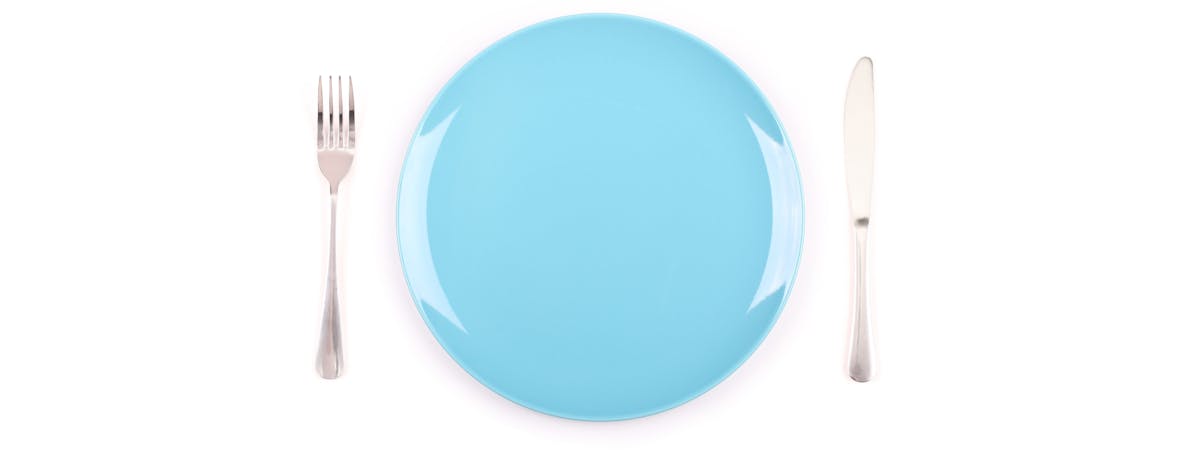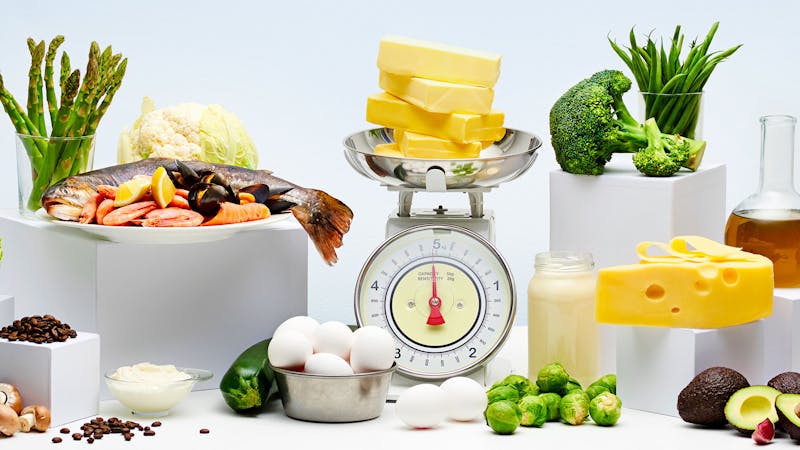How to treat insulin resistance
Insulin resistance is a common, almost silent condition in which the body’s cells become less able to efficiently respond to the hormone insulin.
As described in our in-depth companion guide: What you need to know about insulin resistance, this becomes a vicious cycle with insulin rising higher and higher and cells becoming even more resistant.
Eventually this may lead to pre-diabetes, type 2 diabetes, PCOS, or other chronic health conditions.
For more information about how and why insulin resistance happens, the health conditions related to insulin resistance, and how insulin resistance is diagnosed please refer to our companion guide.

What you need to know about insulin resistance
GuideInsulin is an essential hormone we can’t live without. What happens, however, when it is chronically too high? Our tissues stop responding to it effectively. That’s insulin resistance.
Can drugs help?
If you have been diagnosed with insulin resistance, your first question may be whether any medications can treat this condition. While the FDA has not approved any drugs specifically to treat insulin resistance, there are two commonly prescribed drugs for diabetes that can improve insulin sensitivity.
Many doctors prescribe metformin for patients with prediabetes and/or insulin resistance. It works by decreasing glucose production by the liver and increasing the insulin sensitivity of cells.
Pioglitazone is another medication that lowers blood sugar by enhancing the body’s sensitivity to insulin.
Though drugs may play a role in improving insulin sensitivity and delaying the onset of type 2 diabetes, they are rarely adequate as a sole intervention. What else can you do if you have insulin resistance? This guide explores the lifestyle changes you can make as supported by the latest evidence.

The low carb diet
Practically any dietary intervention that results in weight loss, especially fat loss within the abdomen, can temporarily improve insulin sensitivity.
The reason why low carb diets are good for people with insulin resistance is simple: if you are not eating sugar — or carbohydrates that rapidly digest to sugar — you will have less sugar entering your bloodstream and therefore less of a need to make insulin to move sugar (glucose) out of the blood and into cells.
If your body is already resistant to insulin, creating this internal environment in which high levels of insulin are not needed to maintain normal blood sugars is extremely helpful.
Studies show that a low carb diet can be an effective diet for improving blood sugar control and achieving type 2 diabetes remission.
One short study in 2005 showed a 75% improvement in insulin sensitivity in ten patients with obesity and type 2 diabetes who went on a low carb diet.
In two other studies, a very low carbohydrate diet was better at lowering insulin levels than a low fat diet.
Yet another trial showed that a low carb diet was better than a low fat diet plus a popular prescription weight loss drug for lowering insulin, glucose and HbA1c levels.
Finally, one study reports that people with insulin resistance have worse compliance with a low fat diet, and better compliance with a low carb diet.
Takeaway: Reducing your intake of sugar and carbs that digest to sugar will likely result in reduced insulin production and improved insulin resistance.
What does this diet look like? Dozens of guides on our site delve into all aspects of low carb and ketogenic eating. Check out these two to start:
Other dietary evidence
It is important to note that studies also show that any diet that causes weight loss can reduce insulin resistance and improve insulin sensitivity — at least for a time.
The reverse is true, too. Any diet that causes a rapid increase in bodyweight, such as from consuming high carb, high fat, high calorie foods (sometimes called over-nutrition), can immediately cause insulin resistance — within days — even among healthy young men.
Over the years, other areas of research have explored the possibility of specific diets decreasing insulin resistance:
- increasing protein intake
- increasing dietary fiber intake
- eating low-glycemic index foods
- lowering dietary fat intake
To learn more about the strengths and weakness of these other dietary approaches, and why we recommend low carb eating, click below:
Takeaway: A diet that is low in carbs, higher in protein, and high in soluble fiber from above-ground vegetables appears to have the best current evidence for reducing insulin resistance.
Intermittent fasting/time-restricted eating
Intermittent fasting is a popular dietary trend that entails exactly what it sounds like: not eating during certain time periods. Though it may seem like a fad to some, studies suggest intermittent fasting can improve insulin sensitivity.
Although not all studies agree. For instance, one RCT that did not control for how much or what the subjects ate, didn’t demonstrate a benefit in insulin sensitivity for those doing 16:8 time-restricted eating.
There are multiple mechanisms by which fasting may improve insulin sensitivity. Cells can increase the number of insulin receptors on their surface, and those receptors can demonstrate an increased affinity for binding insulin during fasting.
Also, various hormone levels increase during fasting and are thought to increase insulin sensitivity.
When it comes to implementing intermittent fasting, time-restricted eating is one type of fasting that involves eating meals within a set time-frame each day, such as between 11 am and 7 pm. A review of studies in healthy subjects showed that eating fewer meals during a shorter feeding window resulted in better glucose and insulin levels.
Another type of IF is alternate day fasting. Healthy males who fasted for 20 hours every other day for 15 days showed greater glucose uptake with the same insulin levels, in essence improving their insulin sensitivity.
Another trial reported greater improvements in insulin resistance among women using intermittent caloric restriction (fasting) compared to chronic caloric restriction.
Based on the fact that both fasting and low carb diets have been shown to improve insulin sensitivity, we hypothesize that the combination of a low carb diet with periodic intermittent fasting is likely the most effective nutritional intervention for treating insulin resistance and hyperinsulinemia.
Intermittent fasting may seem daunting, but if you are interested in exploring it, check out our guide:

Intermittent fasting for beginners
Guide Intermittent fasting can help you lose weight, increase energy and gain several health benefits. You can also save lots of time and money. There are, however, many questions about how to do IF in a safe and effective way. In this guide by Dr. Jason Fung, a top fasting expert, you’ll quickly learn how to do it.
Physical activity and exercise
Muscles burn glucose for energy. The more you move, the more glucose your muscles take out of the blood for energy use, which helps to lower your blood sugar levels. This allows for a reduction in insulin secretion, lessening the burden on your pancreas.
Likewise, muscles that don’t move don’t need to use much glucose, leading to a rise in insulin levels to process the excess blood sugar. Studies show that a mere five days of bed rest induces a state of insulin resistance in completely healthy volunteers.
Any type of regular movement can help. Studies suggest that high-intensity interval training (HIIT), resistance training, and cardio training all improve glucose utilization and thereby improve insulin sensitivity.
No matter what your preferred form of movement or exercise, it is clear: inactivity can lead to insulin resistance. And movement increases insulin sensitivity as long as the exercise continues.
One more thing on exercise: you likely cannot outrun a bad diet. Exercising regularly but still eating a high carbohydrate, high-sugar diet will likely partially, if not completely, counteract many of the benefits derived from exercise.
Based on the evidence, it appears that the combination of regular exercise and a well formulated low carb diet is an effective approach for treating insulin resistance and hyperinsulinemia.
Sleep
Studies show that short-term sleep deprivation raises glucose levels and worsens insulin resistance.
It’s unclear how much sleep is too little, just enough, or too much. Is there a difference in insulin sensitivity in someone who gets six hours of sleep per night instead of eight? Is there a certain amount of lost sleep, or a frequency of bad nights that triggers insulin resistance? We don’t know.
However, it is clear that there is an association between insulin resistance and sleep. And treating sleep problems may result in improved insulin sensitivity.
Stress
Studies show temporary insulin resistance arises during periods of short term physiological and psychological stress, such as a sudden illness or sudden threat.
However, it appears that chronic stress and chronic activation of the body’s fight or flight response will also lead to insulin resistance.
Two small controlled studies demonstrated that meditation alone helped reduce blood sugar in patients with heart disease.
Explore the ways that you relax best, and you may be helping improve your insulin sensitivity.
Tobacco use
No aspect of smoking is good for health, but some studies report that active smoking is associated with insulin resistance and the development of diabetes.
Can we cure insulin resistance?
Once someone has dramatically improved their insulin resistance, bringing insulin and blood sugar levels down by eating a low carb diet, and they have improved their exercise, stress management, and sleep, the question then becomes: are they cured?
Probably not. The word cure implies that the person can go back to eating however they want and the insulin resistance will not return. Unfortunately, that’s not how it works. The vast majority of people who reverse their insulin resistance, lower their chronically high insulin levels, and lower their blood sugars will see those all return to previous high levels if they stop their lifestyle interventions and return to their old diets and habits.
This reinforces the need to make lifestyle changes that can be maintained for decades and lifetimes. Crash diets or short-term interventions only help in the moment. Insulin sensitivity is a lifelong balance.
However, some people may have what amounts to a partial cure, especially if their insulin resistance is caught early. Clinical practice suggests that for some people, eating a low carb diet, losing weight and getting insulin levels down will restore insulin sensitivity and may allow them to regain the degree of metabolic flexibility found in healthy individuals.
That metabolic flexibility may allow them to increase the amount of carbs they can safely eat from 20 grams per day up to 75 grams, or it may allow them to reduce the amount of exercise they need to keep blood sugar and insulin levels low.
In addition to maintaining weight loss, regular blood tests may be required to determine who will achieve metabolic flexibility and how much flexibility they can “get away with” without triggering the cycle of insulin resistance again.
So the best advice may be to stick with the most intensive lifestyle change you can maintain and be vigilant about screening for recurrence of insulin resistance. This starts with keeping an eye on your waist size, but also may include regular (every 6 months or so) blood tests for fasting insulin and fasting glucose.
See our companion guide What you need to know about insulin resistance, which discusses diagnostic tests.
You can also measure your 2-hour post-meal blood sugar levels after a low carb meal and a moderate-carb meal and compare the readings. If a moderate carb meal causes your blood sugar to go over 140 mg/dl (7.8 mmol/L), that could be a sign that you may still be insulin resistant.

What you need to know about blood sugar
Guide If you have a diagnosis of diabetes, you’ve probably been tracking your blood sugar for years. But if you’ve recently decided to try a low carb or ketogenic diet, you may need to understand your results in the context of your new dietary pattern.
Summary
Insulin and its proper functioning are important for survival and good long-term health. Obesity, metabolic dysfunction, and chronically high insulin levels make your body less responsive to this essential hormone, which might increase your risk of developing serious chronic health conditions.
Adopting effective lifestyle changes — like a low carb diet, regular physical activity, and a good sleep routine — can lower insulin levels and reduce insulin resistance.
Did you enjoy this guide?
We hope so. We want to take this opportunity to mention that Diet Doctor takes no money from ads, industry or product sales. Our revenues come solely from members who want to support our purpose of empowering people everywhere to dramatically improve their health.
Will you consider joining us as a member as we pursue our mission to make low carb simple?





